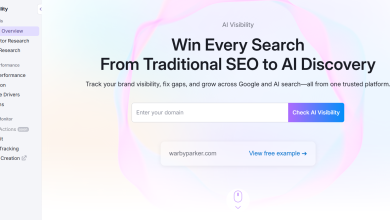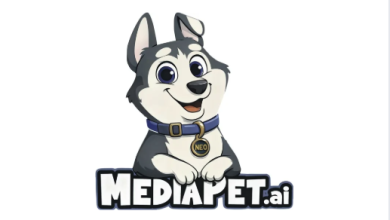If you’ve been scrolling through LinkedIn lately, you might have noticed something odd. Every other post seems to start with “Let’s talk about…” or “Here’s the thing…” The email newsletters hitting your inbox all have that same casual-yet-professional tone. The product descriptions you’re reading could have been written by the same person, even though they’re from completely different companies.
Welcome to the homogenization problem—the increasingly noticeable reality that AI-generated marketing content is starting to blend together into one indistinguishable voice.
The Pattern Recognition Trap
Here’s what’s happening: AI language models are trained on massive datasets of existing content. They learn patterns—what works, what gets clicks, what sounds “professional” or “engaging.” The problem is that when millions of marketers use these same tools with similar prompts, they all get variations of the same patterns back.
Think about it this way. If you asked a hundred different people to “write an engaging email subject line about a sale,” and they all consulted the same style guide, you’d get a hundred similar subject lines. That’s essentially what’s happening with AI-generated marketing, except the “style guide” is embedded in the training data itself.
The models aren’t trying to sound the same—they’re just optimizing for what statistically tends to work. And when everyone optimizes toward the same statistical center, you get a convergence problem. The edges get smoothed out. The distinctive voices disappear. Everything trends toward the mean.
Why This Actually Matters
You might be thinking, “So what? If it works, it works.” But here’s the issue: homogenization is the enemy of memorability, and memorability is the foundation of brand building.
When every brand sounds like every other brand, you’re not building brand equity—you’re just adding to the noise. Customers can’t tell you apart from your competitors. Your carefully crafted messaging becomes wallpaper. The psychological phenomenon of “banner blindness” extends to content itself: people learn to tune out anything that sounds like generic marketing speak.
There’s also an authenticity problem. Consumers are getting better at recognizing AI-generated content, and when they do, it can trigger skepticism. Not because AI itself is bad, but because generic, pattern-following content feels impersonal and mass-produced—because it is. In an era where authenticity is currency, sounding like everyone else is a liability.
The Root Causes
The homogenization problem stems from several interconnected issues. First, there’s the training data problem. Most AI models are trained on content that already exists online, which means they’re learning from marketing content that has already been optimized, refined, and homogenized by years of best practices and A/B testing. They’re learning the patterns of patterns.
Second, there’s the prompt problem. Most marketers aren’t prompt engineers. They’re using straightforward, obvious prompts like “write a professional LinkedIn post about our new feature” or “create an engaging product description.” These generic prompts produce generic outputs. The AI is doing exactly what it’s asked to do—it’s just that everyone is asking for the same thing.
Third, there’s the safety problem. AI models are designed with guardrails to avoid offensive, controversial, or problematic content. This is generally good, but it also means the models tend to play it safe, staying firmly in the middle of the acceptable range. Edge cases, bold voices, and distinctive styles get smoothed away in favor of broadly acceptable content.
The Evolution: How New Platforms Are Fighting Back
Here’s the good news: the AI marketing industry is well aware of the homogenization problem, and new platforms are emerging with solutions baked into their architecture.
Some of the most promising developments focus on brand voice customization. Rather than just generating content from scratch, platforms like Blaze AI allow companies to train models on their existing content—blog posts, social media, customer communications—to capture their unique voice and style. The AI learns not just what good marketing sounds like in general, but what your marketing specifically sounds like.
Other platforms are taking a collaborative approach, positioning AI as a co-creator rather than a replacement. They’re building tools that generate multiple distinct variations, each with different tonal approaches, so marketers can choose the direction that best fits their brand personality. Some systems even allow you to dial specific attributes up or down—more formal or casual, more technical or accessible, more bold or conservative.
There’s also movement toward context-aware generation. Newer AI marketing tools don’t just consider the immediate task; they analyze your entire brand ecosystem—your website, your previous campaigns, your customer demographics, your competitive landscape. They’re designed to maintain consistency with your established identity while still bringing fresh ideas to the table.
Perhaps most interestingly, some platforms are incorporating human feedback loops that go beyond simple ratings. They track which AI-generated content performs well for specific brands and use that data to further refine the model’s understanding of what works for that particular company. The AI essentially learns your audience’s preferences over time, moving away from generic best practices toward brand-specific optimization.
The Human Element Still Matters
Even with these technological advances, the most successful approach to AI-generated marketing isn’t to eliminate human involvement—it’s to redefine it. The marketers who are using AI most effectively aren’t the ones treating it like a vending machine where you insert a prompt and get finished content out. They’re using it as a starting point, a brainstorming partner, or a draft generator.
They’re taking that AI-generated first draft and injecting personality, refining the voice, adding specific examples and insights that only someone inside the company would know. They’re using AI to handle the structural heavy lifting while they focus on the distinctiveness that makes their brand memorable.
Moving Forward
The homogenization problem is real, but it’s not permanent. As AI marketing tools become more sophisticated and marketers become more skilled at using them, we’re likely to see a new equilibrium emerge—one where AI handles efficiency and scale while human creativity and brand distinctiveness come to the forefront.
The key is recognizing that AI-generated content is a tool, not a solution. The brands that will thrive in this new landscape aren’t the ones that can generate the most content the fastest. They’re the ones that can use AI to amplify their unique voice, not drown it out in a sea of sameness.
The technology is evolving. The question is: are we evolving our approach to using it?





